 |
 |
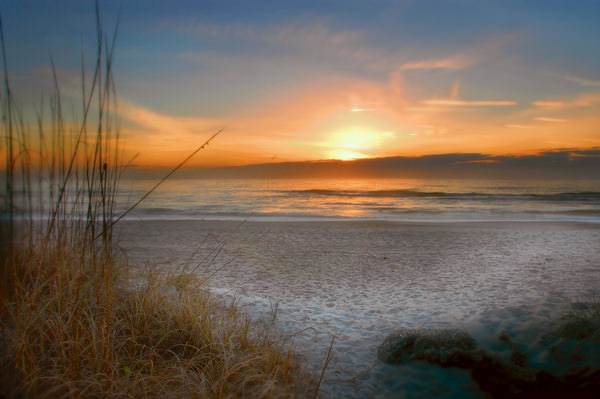 |
| ©2015 Henry McDaniel Photography |
| Your place in the sun |
| Florida's Amelia Island with its own world of culture, good times, and rich history. |
| Leaving the Brunswick Georgia area (home of the shrimping story) and heading down the coastline to Florida you can find numerous, out of the way spots to explore and dine. About an hour south you'll find the quaint town of Fernandina Beach on Amelia Island. Located just south of the Florida / Georgia line, Fernandina Beach is recognized as the birthplace of the modern shrimping industry. |
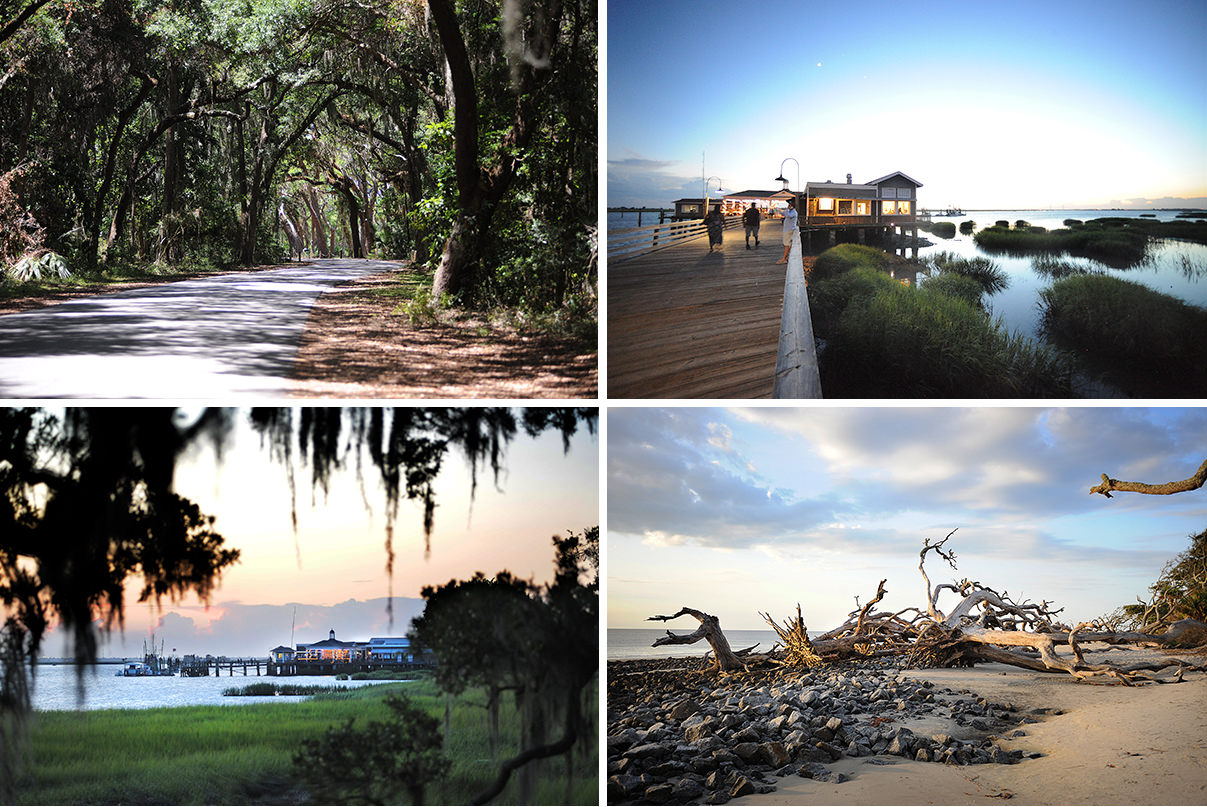 |
| Off the beaten path you'll find oak canopied trails, waterfront hideaways, and beaches scattered with rocks and driftwood. |
| Amelia Island honors the bounty of its waters with the annual Isle of Eight Flags Shrimp Festival, held on the first weekend of May (2016 marks the 53rd celebration). Since the festival's inception, more than 150,000 visitors show up every year to sample shrimp prepared in every man manner, as well as attend outdoor art and crafts exhibitions and guest performances by leading entertainers, and just experience the life of the island. The people of Amelia Island - natives and visitors alike - are readying for their day on this barrier island, the northernmost on Florida's Atlantic Coast. The landscape is defined by 13 miles of uninterrupted beach, lined with 40-foot dunes covered in patches of sea oats. |
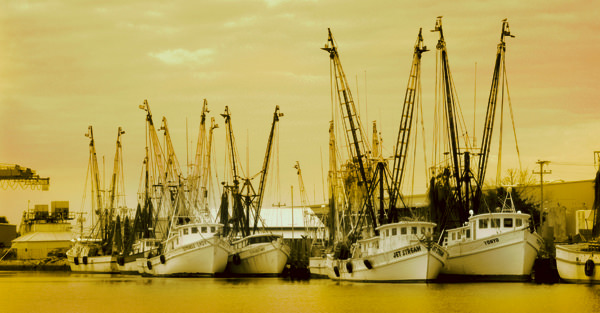 |
| Shrimp boats return to the harbour to unload their catch. |
| Some people have chosen the porch - of which there are blocks upon blocks in the residential neighborhoods - as the arena of their day's focus. All over town, you can start to hear the thwack of screen doors and the creak of rocking chairs and swings on the Victorian-era porches. This is indeed, a small southern town. |
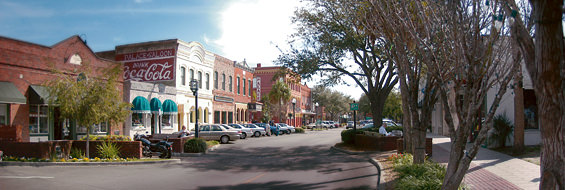 |
| Centre Street in historic Fernandina. |
| Named for a Princess |
| The ways of Amelia Island have not always been so tranquil, however. More than 4,000 years ago, the Timucuan Indians inhabited the area, a tribe whose members were noted for their excessive height and the custom of tattooing themselves with multi-hued symbols. By 1562, French settlers began to arrive, led by the Huguenot leader Jean Ribault, who soon named the area Isle de Mai, or Island of May, in recognition of the month in which his group landed. Just three years later, though, the Spanish established a mission they called Santa Maria, renaming the island for the saint. |
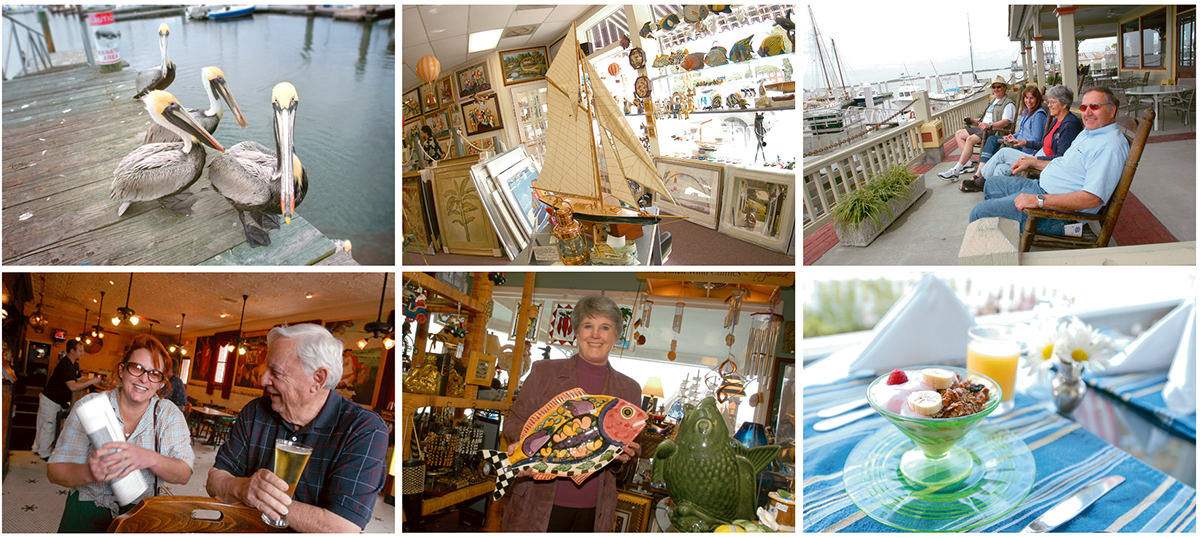 |
| From top left: Local pelicans rule the dock, many shops sport a nautical theme, visitors take a break at Brett's Dockside. From bottom left: Taking a break at the pub, a shopkeeper shows off local wares, breakfast at a nearby B&B. |
| Soon, it seemed that all of the major European powers of the time took an interest in the area known now as Amelia Island. The British coveted access to its harbor, and by 1763, James Oglethorpe, the British governor of Georgia, named the island to honor King George II's daughter, Princess Amelia. Following the Revolutionary War, Spain regained control, establishing the town of Fernandina for their king Ferdinand, its namesake. It would be the last Spanish town founded in the New World. |
The British coveted access to its harbor, and by 1763, James Oglethorpe, the British governor of Georgia, named the island to honor King George II's daughter, Princess Amelia. |
Following years as a nest for piracy, President James Madison enlisted the help of resident Americans to bring order. On March 17, 1812, the so-called Patriots of Amelia Island, aided by a daunting U.S. flotilla, gained control of Fernandina. The American flag was unfurled - but it was not until July 10, 1821, that Florida officially became a territory of the United States.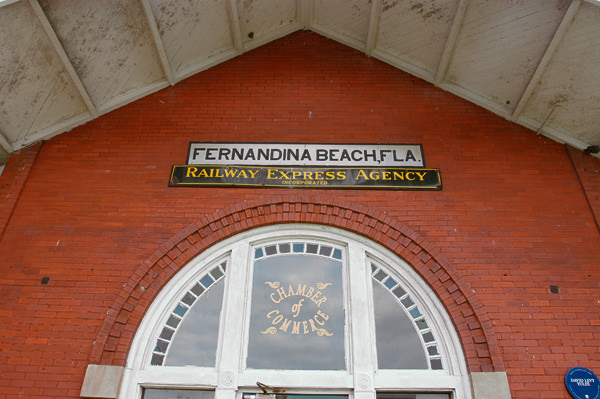 Fernandina Beach, as we know it today, would not exist were it not for the efforts of David Levy Yulee, a Florida U.S. senator who founded the Florida Railroad Company to link the town with Cedar Key on the Gulf Coast. Fernandina Beach, as we know it today, would not exist were it not for the efforts of David Levy Yulee, a Florida U.S. senator who founded the Florida Railroad Company to link the town with Cedar Key on the Gulf Coast. |
| Fernandina Beach Chamber of Commerce office is in the historic railway station building. |
 |
| Although the railroad was destined to usurp the role of shipping companies, whose vessels were forced to make a 1,000 mile trip around the Florida peninsula, Yulee's project opened on the eve of the Civil War. Following the war, Amelia Island entered its Golden Age. From 1870 to the eve of World War I, wealthy American industrialists gravitated to Fernandina, building elaborate Victorian mansions that endure today, many as bed and breakfasts. |
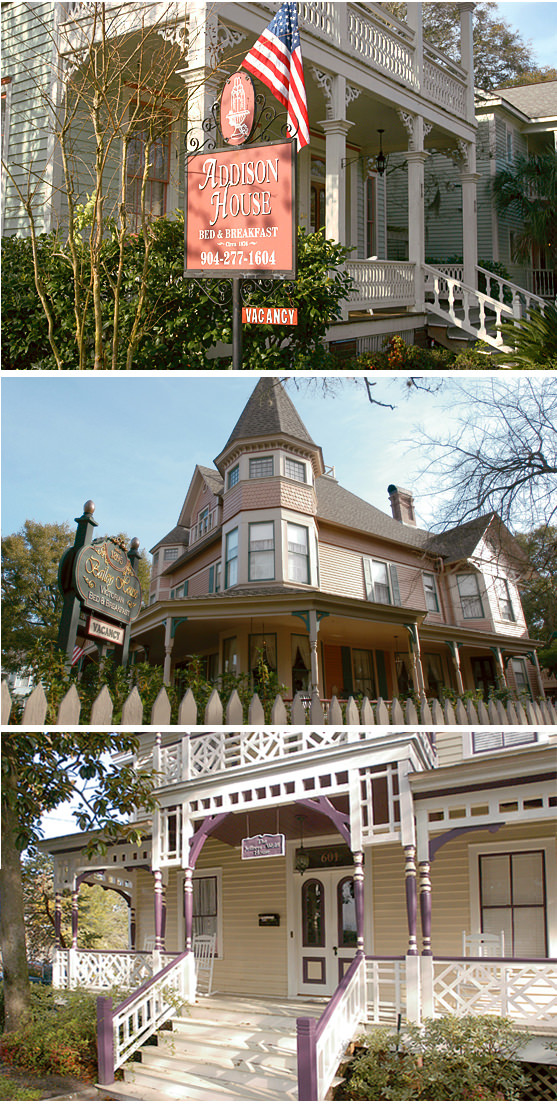
B&Bs pictured from top: Addison House, Bailey House, Jeffreys House
Setting its sights
As the day progresses, all that Amelia Island offers is revealed. Groups of birdwatchers, with binoculars positioned, scan the tree tops for rare specimens. Fishermen have cast their lines from a half-mile-long pier in Cumberland Sound, while others have ventured out in boats into the calm waters in search of tarpon, kingfish, trout, red bass, flounder, barracuda, amberjacks and many other varieties of sport fish. Horseback riders gallop along deserted beaches; and architectural tours are led through Victorian neighborhoods filled with pristine examples of the Queen Anne, Italianate and Florida Vernacular styles (portions of the Fernandina Beach residential neighborhoods are listed on the National Register of Historic Places). The boutiques on and off Centre Street are busy with shoppers, many of whom stop to scan restaurant and café menus.
| Fort Clinch State Park |
| One of the most conspicuous and alluring sights in town, though, is Fort Clinch State Park. The 1,086-acre expanse of beachland, ponds, salt marshes, dunes and forest was established in 1864 on the mouth of St. Mary's River. |
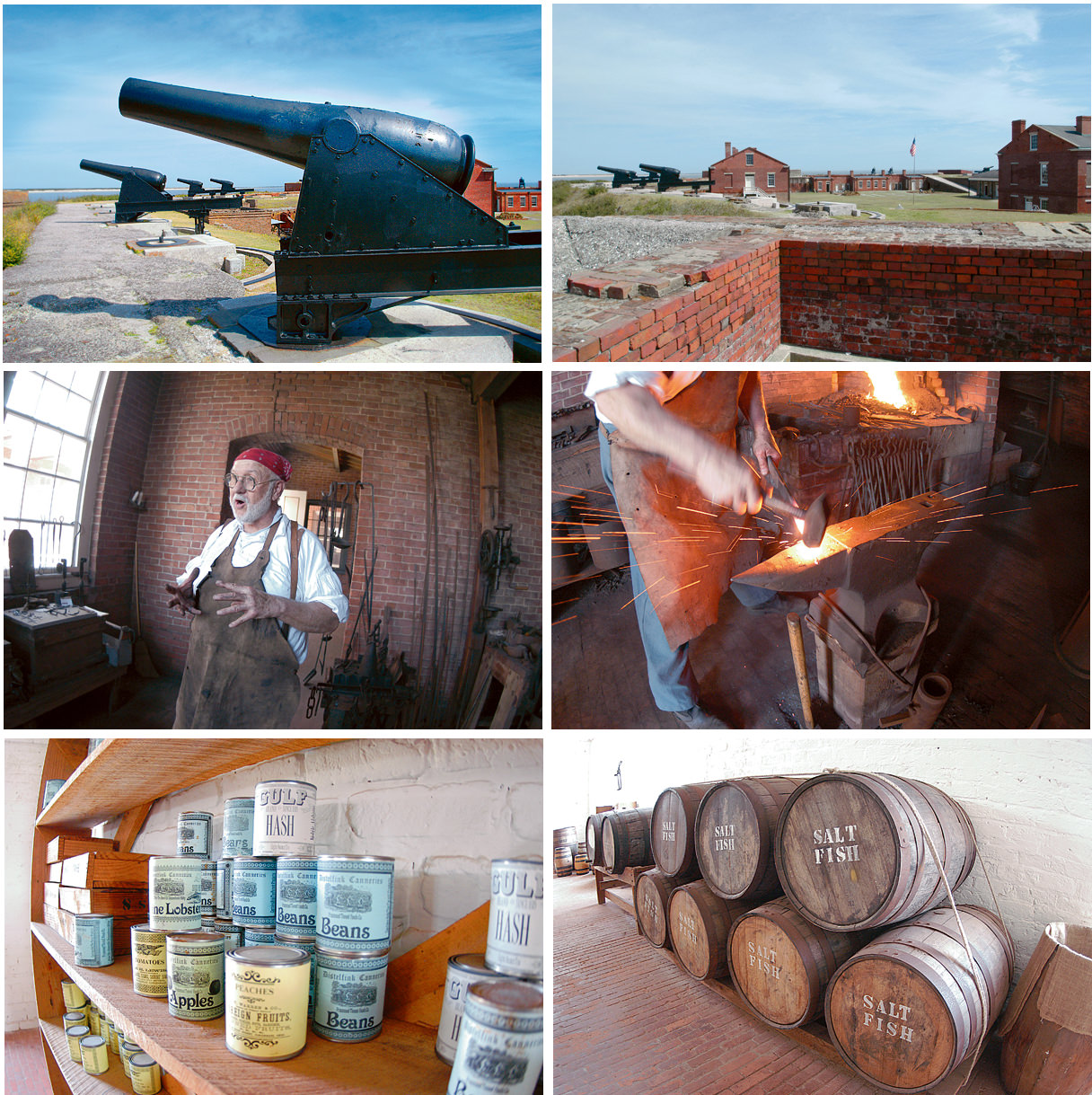 |
| Pictured starting top left: Cannon that surround Fort Clinch, the grounds of the Fort, an on-site blacksmith gives a history lesson while making a replacement hinge from scratch, reproductions of the wares and rations of the time including barrels of salt fish. |
Although never completed, the fort was designed to protect the port and cross-state railroad. Today, visitors can explore the many buildings on site - a prison, barracks, bakery and blacksmithing shop, where an interpretive guide hammers out tools using period technology. 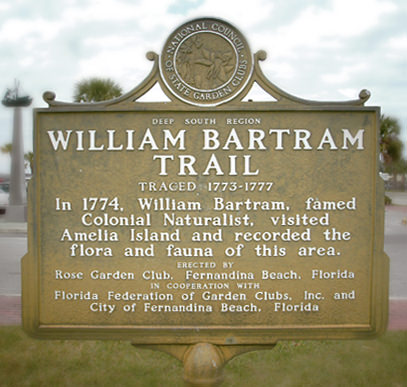 Hiking and biking trails course the land. From various points in the park, the Amelia Island Lighthouse comes into view, built in 1839 and occupying the highest point in Florida - 107' above sea level. Hiking and biking trails course the land. From various points in the park, the Amelia Island Lighthouse comes into view, built in 1839 and occupying the highest point in Florida - 107' above sea level.All in all, this entire area offers vistors something a bit different, off the norm you might say, but, definitely interesting and enjoyable. Take time and explore! |
| SIDENOTE: William Bartram was America's first native born naturalist/artist .
Bartram's southern trek encompassed the foothills of the Appalachian mountains to Florida and through the southeastern interior all the way to the Mississippi River. He documented the relatively pristine eighteenth-century environment of eight modern states: North and South Carolina, Georgia, Florida, Alabama, Mississippi, Louisiana and Tennessee. William Bartram published an account of his adventure in 1791. The Bartram Trail Conference, Inc., founded in 1976, has sought to identify and mark Bartram's southern journey and works to promote interest in developing recreational trails and botanical gardens along the route. |
| INFO |
|
Georgia's Coastline - exploregeorgia.org/region/the-coast Amelia Island - ameliaisland.com Fernandina Beach - fbfl.us Isle of Eight Flags Shrimp Festival - shrimpfestival.com Fort Clinch - floridastateparks.org/park/Fort-Clinch Bartram Trail Conference - bartramtrailconference.wildapricot.org |
| Discover more... |





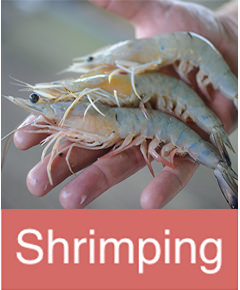



|
 |
| Sign up for free articles! |
 |
| See all current articles |
 |
 |
 |